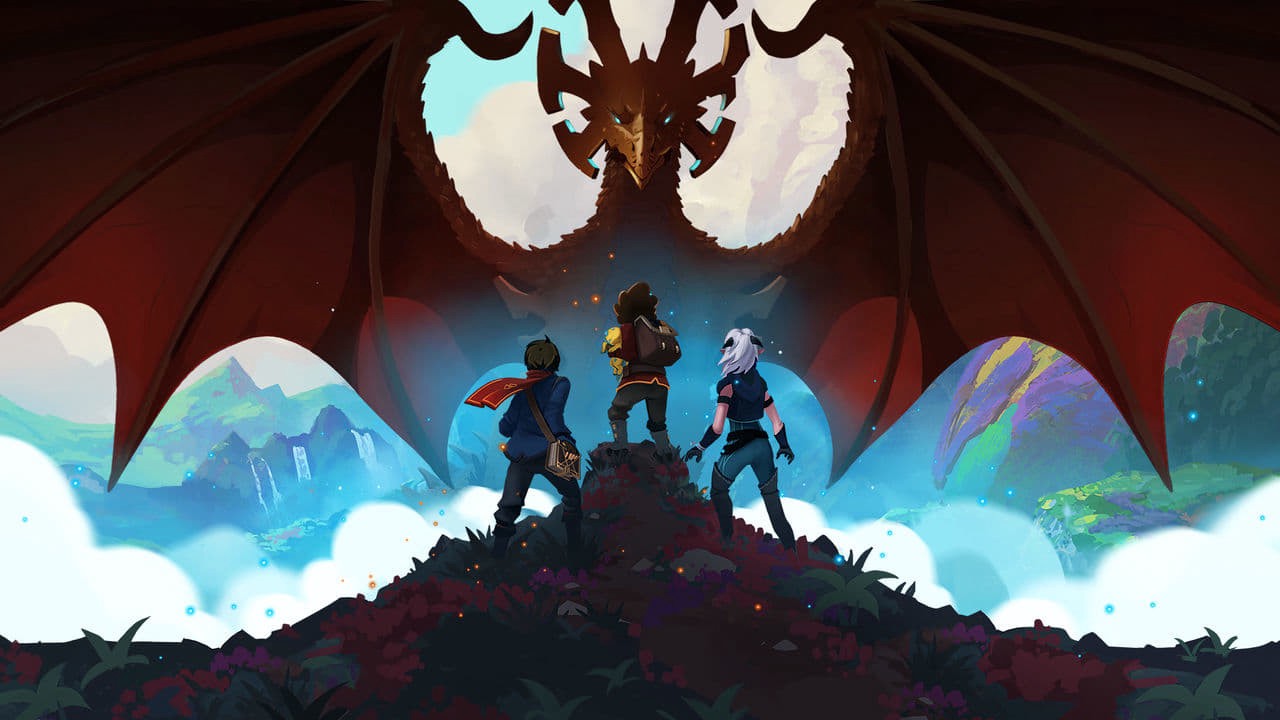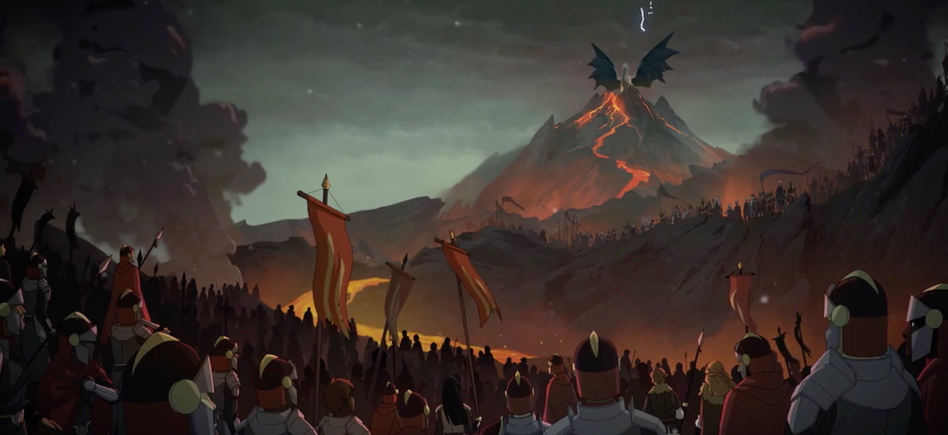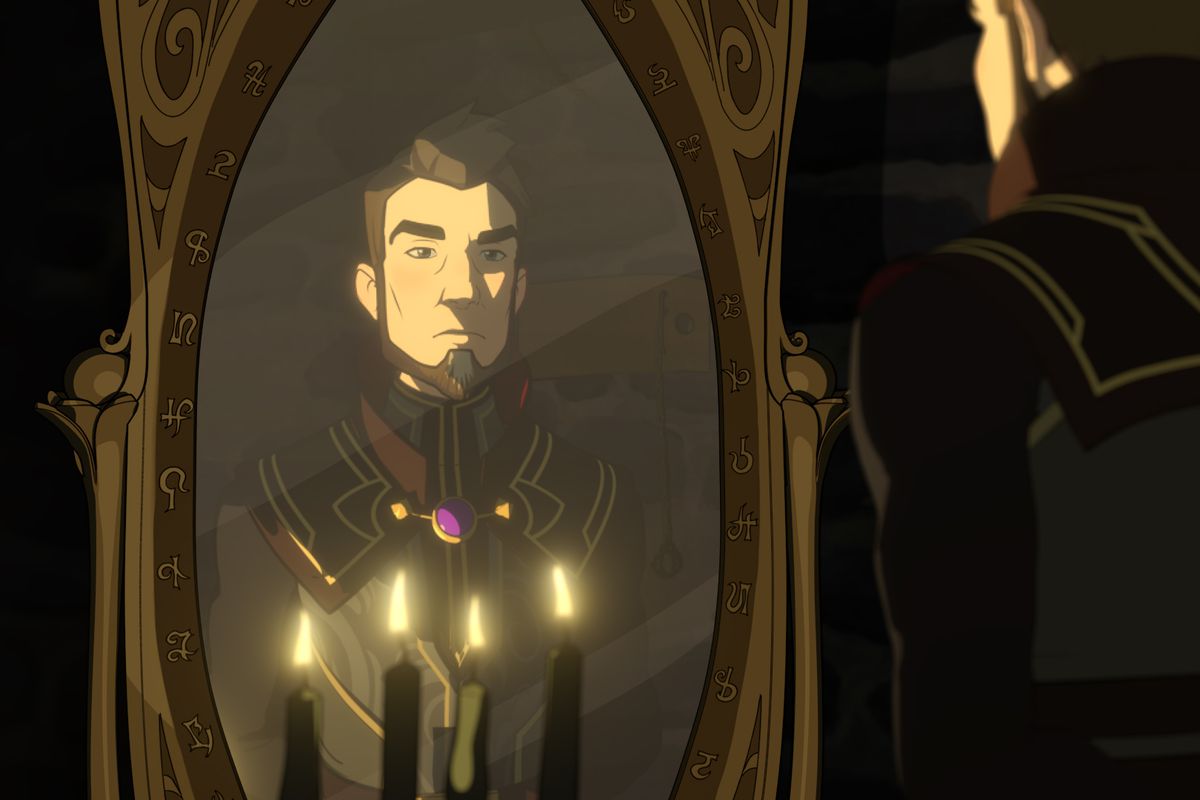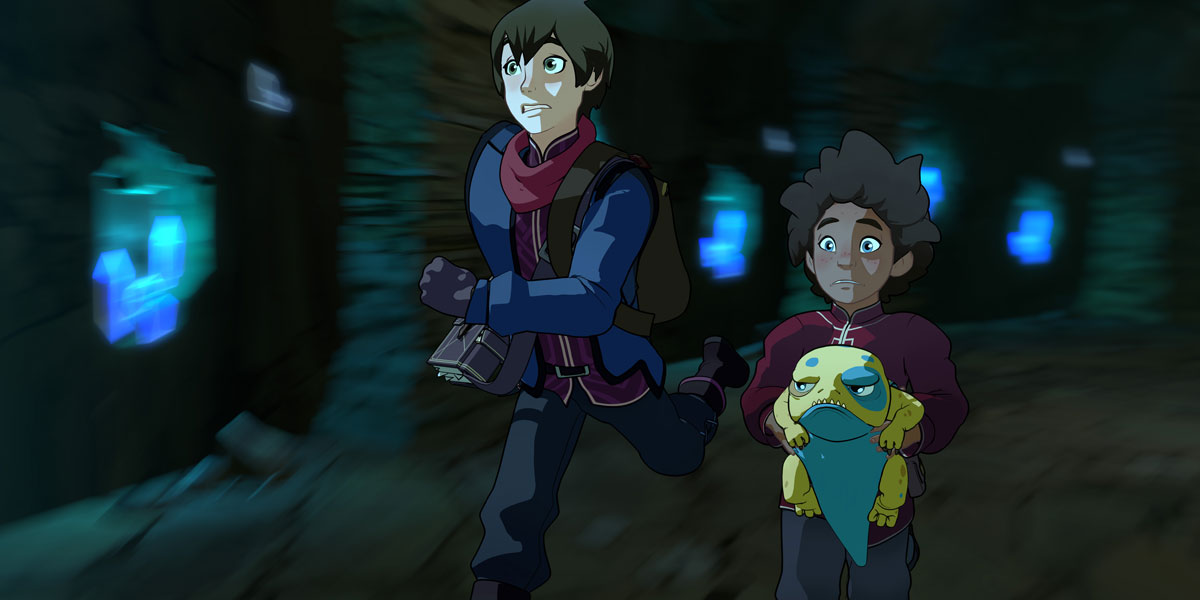
After a promising but somewhat slight first run of episodes, The Dragon Prince has returned with a season that capitalizes on the previously established characters and world-building. Taking place in a fantasy setting where humans and elves maintain a tenuous armistice, things suddenly veer towards war as a band of elven assassins aims to retaliate against the human king Harrow. However, Ezran and Callum, the son and step-son of Harrow respectively, have a chance encounter with Rayla, one of the assassins, discovering a secret that has the potential to prevent war. The three set off on a journey to Xadia, the land of the elves, so they can share this secret and hopefully avoid a wider conflict breaking out. Meanwhile, Viren, the king’s adviser, rattles sabers and attempts to unite the human kingdoms in battle.
While the premise may sounds as though it would only appeal to die-hard fans of high-fantasy, the pedigree of the project holds a lot of sway. The show’s co-creators are Aaron Ehasz and Justin Richmond. Ehasz was the head writer for Avatar: The Last Airbender, while Richmond co-directed Uncharted 3. And the hype for the return of Ehasz as a lead writer certainly isn’t unfounded. Avatar’s lineage can be felt here in the irreverent humor, character chemistry, and a specific brand of optimism tempered by the realities of the world. However, this hype also comes with high expectations, which undoubtedly colored the reception of The Dragon Prince’s first season.

While the first run of episodes worked as a good introduction to the central conflict, they felt somewhat dramatically unsatisfying due to having a short run time and relatively slow pacing. But perhaps the biggest disappointment was the quality of the 3D animation. While the action scenes got around the low frame rate through constant motion and well-blocked frenetic shots, things looked quite stilted when there wasn’t a brawl. The background art was mostly fine, and there were occasional shots that dazzled, but the character models often moved in an awkward and stiff manner.
Luckily, Season 2 feels like it at least partially addresses both of these problems. Here the pacing is far less trying, as the main objective of this story is moved forward in a satisfying fashion. Ezryn, Rayla, and Callum traverse the countryside on their path to Xadia, encountering trials and tribulations along the way. However, instead of structuring the story entirely around one-off mini-arcs, most of the episodes directly tie into character arcs or fill in the backstory to this world. We see the motivating forces for the powerful characters that brought about the current situation, further humanizing them. While the main antagonist of the series, Viren, descends further into villainy, we also come to understand his motivations and even see some of his more heroic moments. There are interesting layers to the moral conundrums at the heart of the political machinations, meaning that characters rarely act simply out of malice or purely centered intentions.

The central characters of the story have to overcome as many internal challenges as external ones. Callum confronts his feelings of inadequacy through a self-destructive quest for purpose. Ezyrn has to deal with growing up very quickly in circumstances that clash with his natural kind-heartedness. Rayla is plagued by the guilt of hiding secrets from the boys, as well as butts heads with their childhood friends. And Viren’s children, Soren and Claudia, have to balance their feelings towards Ezryn and Callum against their father’s wishes. But amidst the heavier material, there are plenty of moments of levity that feel as though they extend naturally from these characters. With not one but two adorable animal mascots, we get comedic relief that comes without tonal dissonance. The relationships between the main cast flow as naturally as the humor, with plenty of moments that depict friendly banter, or tension melting into reconciliation. As previously mentioned, all of this character work coincides with the steady progress of the party advancing towards their goal, marking a season that is as equally dramatically and emotionally satisfying.
In regards to the animation, the frame-rate has been increased to make the characters move much more smoothly. This improves the quieter scenes noticeably, but the models still occasionally move awkwardly outside of the action scenes, a problem that stems from the choice of format. While 3D animation has reached a level of fluidity and detail in video games and film that is quite impressive, the only 3D animated show I’ve ever seen that looked fully cohesive or convincing is Land of the Lustrous. I don’t mean to provoke the debate between the merits of 2D and 3D animation, but it does feel like the increasingly common switch from the former to the latter is a creative choice born out of cost-cutting, at least in the context of television. While it’s nice to imagine a version of this show handled in the same style as Avatar, or exported to some action-oriented animation studio in Japan or South Korea, the flip side of this is that the format has allowed for two seasons to be released in the span of less than half a year.

While the nine-episode second season of The Dragon Prince still feels a little short, it managed to build off of the setup of the first season to make for a much more satisfying series of episodes. The humor makes the characters engaging on a surface level, while the thorough backstories and well-orchestrated inner conflicts grant depth. The character’s frequent quips come off as well as their genuine struggles for establishing selfhood, and this all naturally coincides with the progression of our heroes’ ultimate goal. The show’s philosophy of inclusivity is not only refreshing but also ties in with its central themes about finding commonality between different groups of people. While the latest season still feels a little brief, the most recent batch of episodes capitalizes on the promise that the first season provided. It depicts its characters with interiority and complexity, further proving that “children’s” cartoons can get around modern television’s proclivities towards grim-dark violence through smart writing.
Rating: 8.5/10






